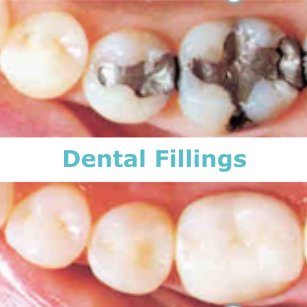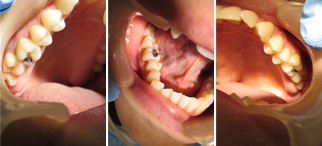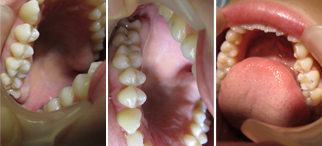White or Silver Fillings?

Most people already have, or will have, a filling at some point in their lives. There are two options that you and your dentist can choose from. Silver fillings (amalgam) and white fillings (composite). Your dentist will discuss with you the type of filling most appropriate for your clinical needs. Read on to find out the advantages and disadvantages of the two options.
Silver Fillings
Amalgam fillings are silver in appearance but not in composition. They are actually made from a mixture of mercury, silver, tin and copper. These fillings have been around for a long time and are extremely hard wearing.
The main advantage of these fillings is that they are extremely durable and strong. They are less prone to wear and so are often the choice for back molar teeth which we use for chewing. They are less expensive than tooth coloured fillings due to their ease of application and if looked after properly they can last for many years.
The disadvantage of silver fillings is that they don’t match the colour of your natural teeth and are therefore noticeable. Also, over time some of these fillings discolour the enamel surrounding the filling giving it a greyish hue.

Are silver fillings safe?
Over the last few years there has been concern over the safety of amalgam fillings due to their mercury content. Research into the safety of dental amalgam has been carried out for over 100 years and there are no studies that prove that silver fillings are not safe.
White Fillings
White or composite fillings are designed to match the shade of your natural teeth. They had previously been considered to be less long lasting than amalgam fillings but with new developments in the materials being used they are now more comparable.
The advantage of white fillings other than the aesthetics is that less of the tooth structure needs to be removed prior to placing the filling. The disadvantage is that these fillings are generally more expensive than silver fillings. One of the reasons for this is that they take longer to place.

Which filling is right for me?
It is important to look at this on a case by case basis. If the tooth needing a filling is at the front of the mouth where aesthetics is important, a white filling would generally be more appropriate. If the tooth is at the back of the mouth and quite deep a silver filling may be more appropriate. There are other options such as inlays/onlays if you definitely don’t want an amalgam filling in a back tooth. White fillings are available on the NHS where clinically appropriate such as if you need a filling in one of your incisors or canines. If you want a white filling in one of your back teeth rather than silver, then this will be classed as a cosmetic treatment and will be provided and charged on a private basis. Should I replace my silver fillings?
We generally recommend waiting until the filing needs replacing. However, we do understand that with the increasing use of social media and the focus on our appearances some people do feel self-conscious laughing and smiling if they have several silver fillings and do opt to have them replaced. If this is the case, please discuss it with your dentist. The patient below came to us as she was unhappy with her silver fillings. On examination we found that one of these fillings required replacing due to decay found under the existing filling. The patient made the decision to replace all three with white fillings and the results can be seen below.




